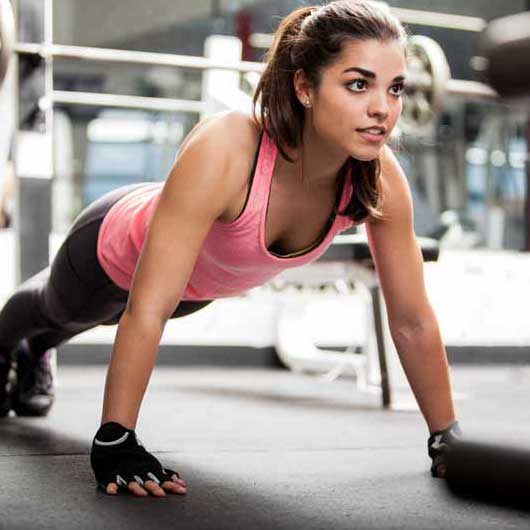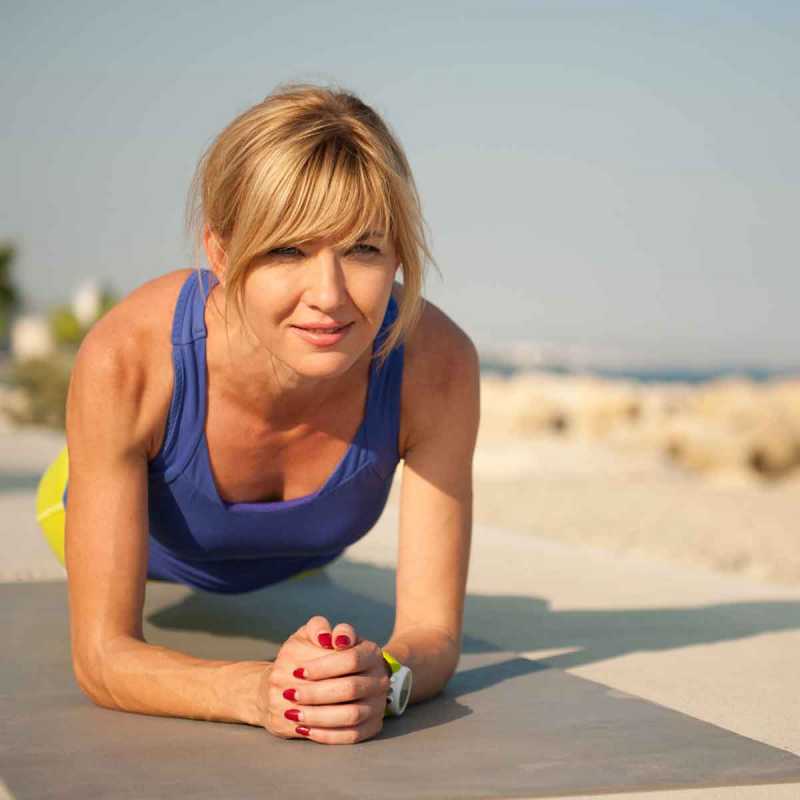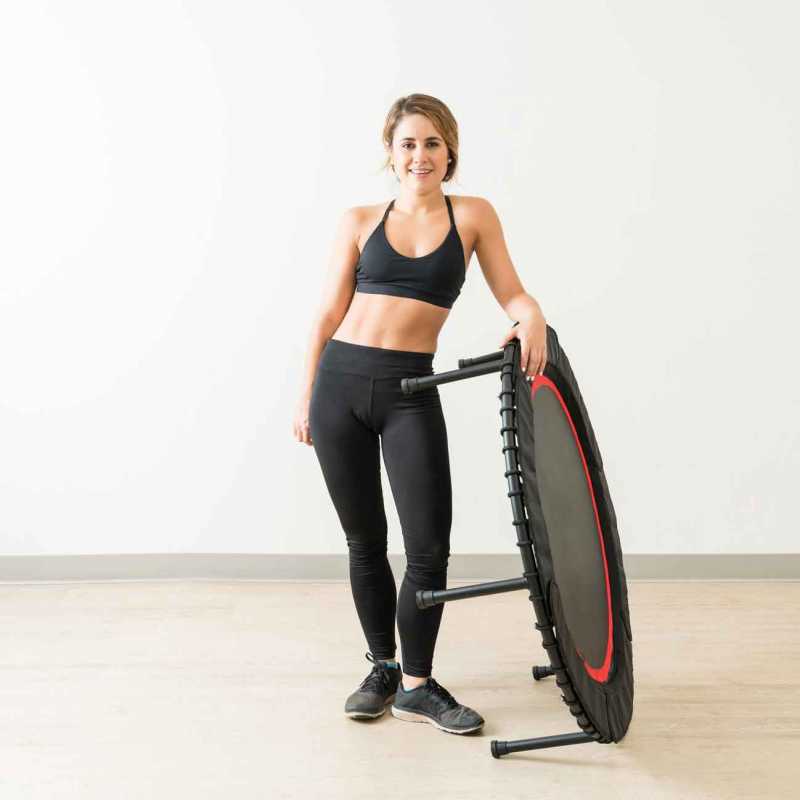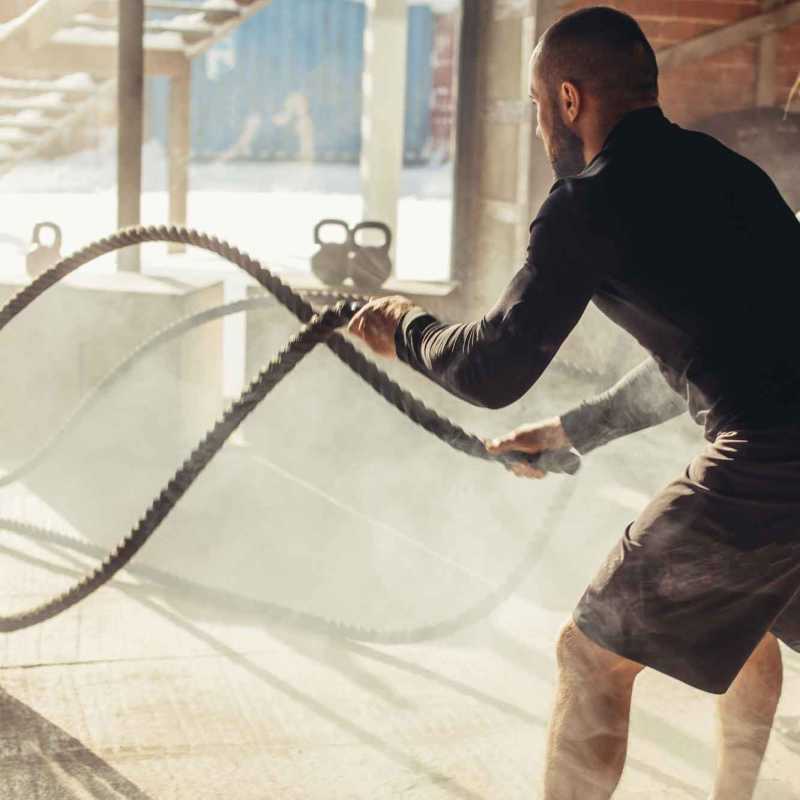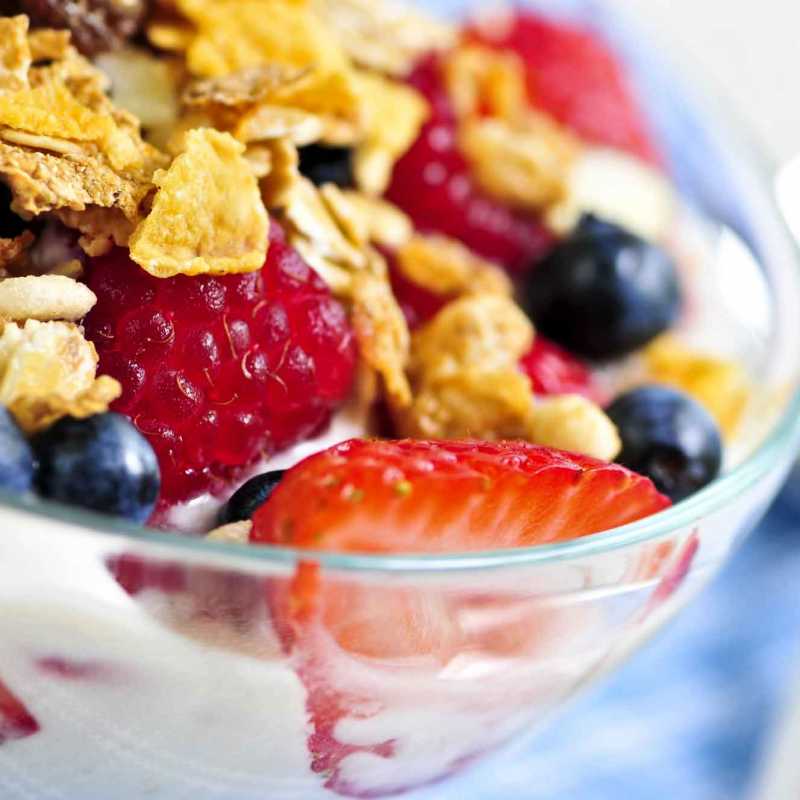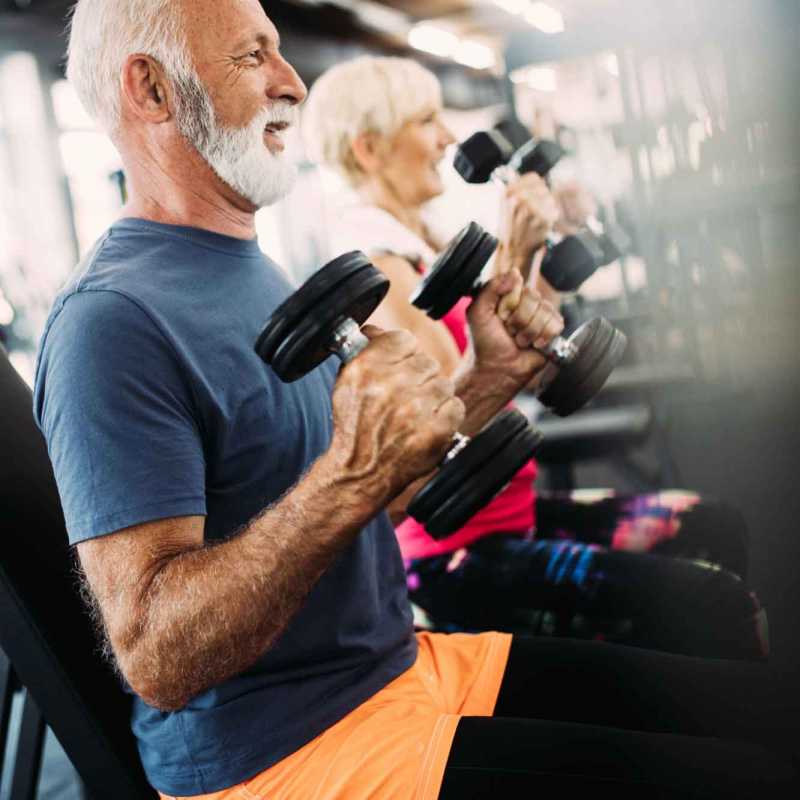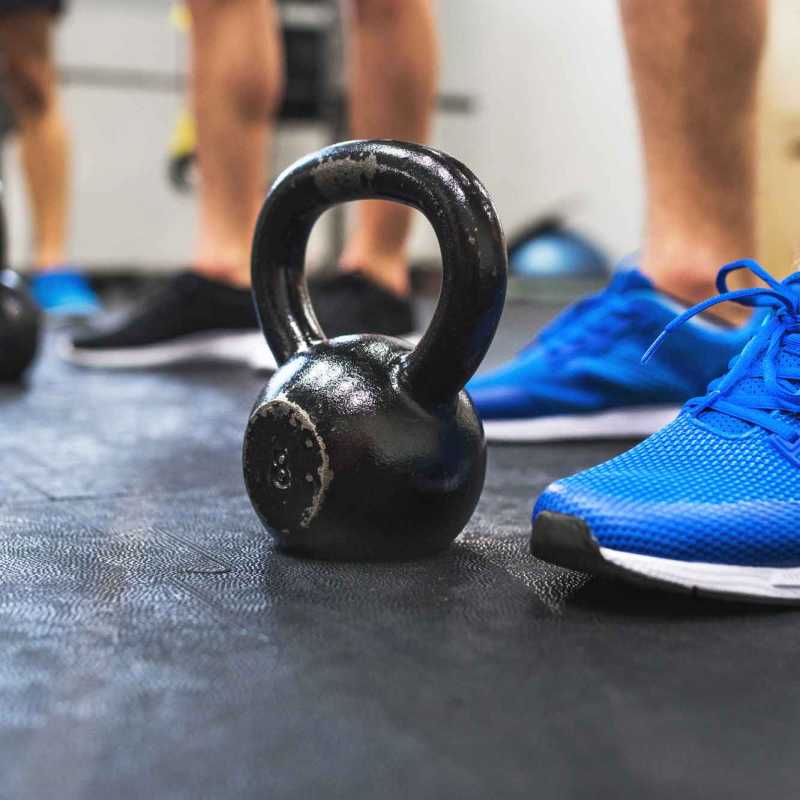High Intensity Interval Training (HIIT)
Learn about its benefits, how it works, tips for beginners, advanced techniques and more.
Have you ever found yourself pressed for time but still wanting to get a great workout?
Maybe you've hit a plateau in your fitness journey and need something new to spark progress.
Working a demanding schedule, I frequently find myself with only 20-30 minutes to work out in the afternoons. That's where High Intensity Interval Training (HIIT) can really shine.
HIIT offers an efficient way to get fit, burn calories, and feel accomplished, all in a short amount of time - this is one of the reasons we use high intensity interval training extensively at Weight Crafters in our fitness retreat and weight loss camp programs.
Keep reading to see why HIIT could be the game-changer you need:
Quick Facts
- Alternates between high-intensity exercise and rest periods
- Typically involves short, intense bursts of activity
- Can be adapted to any fitness level
- Suitable for various types of exercises (running, cycling, bodyweight)
- Effective for burning calories and improving cardiovascular health
- Requires minimal equipment
- Can be done in as little as 20-30 minutes
What is HIIT?
High Intensity Interval Training, or HIIT, is a form of exercise that alternates between intense bursts of activity and fixed periods of less-intense activity or complete rest. These short, intense workouts push your body to its limits, promoting a wide range of health benefits. A typical HIIT session might involve 20 seconds of all-out effort, such as sprinting, followed by 40 seconds of walking or resting, repeated for 20 to 30 minutes. It's intense, but incredibly effective.
HIIT can be adapted to any fitness level and can be performed with various types of exercises, including running, cycling, rowing, and bodyweight exercises like burpees, jump squats, and mountain climbers. This versatility makes HIIT accessible and customizable to meet your individual fitness needs and goals.
How HIIT Works
The magic of HIIT lies in its ability to keep your heart rate elevated throughout the workout, leading to increased calorie burn and improved cardiovascular health. During the high-intensity intervals, your body works at near maximum capacity, depleting oxygen reserves and creating an oxygen deficit. The subsequent rest periods allow for partial recovery, but your body continues to burn calories at an elevated rate, even after the workout ends. This phenomenon, known as excess post-exercise oxygen consumption (EPOC), means you burn more calories long after your workout is over.
Additionally, HIIT stimulates both aerobic and anaerobic fitness, making it an effective way to improve overall cardiovascular endurance and muscular strength. The intense intervals recruit fast-twitch muscle fibers, which are often underutilized in steady-state cardio, leading to improved muscle tone and strength. The varied intensity also prevents boredom and keeps your workouts fresh and engaging.
Benefits of HIIT
- Efficient Workouts: HIIT allows you to get a great workout in a short amount of time, making it perfect for busy schedules.
- Increased Calorie Burn: The high-intensity intervals boost your metabolism, leading to greater calorie burn during and after workouts.
- Improved Cardiovascular Health: Regular HIIT sessions strengthen your heart, improve circulation, and increase VO2 max.
- Fat Loss: HIIT helps reduce body fat while preserving muscle mass, leading to a leaner physique.
- Flexible and Convenient: You can do HIIT anywhere with minimal equipment, making it accessible and easy to fit into any lifestyle.
- Mental Health Benefits: The endorphin release during HIIT can boost mood and reduce stress, contributing to better mental well-being.
- Muscle Gain: Unlike steady-state cardio, HIIT can promote muscle growth, especially when combined with resistance exercises.
The Ultimate HIIT Guide
Ready to transform your fitness routine with HIIT? Start exploring these sections and discover the incredible benefits HIIT has to offer!
- The Science Behind HIIT
- HIIT for Beginners
- Designing Your HIIT Program
- Advanced HIIT Techniques
- HIIT and Nutrition
- Recovery and Injury Prevention
- HIIT for Different Lifestyles
- Comparing HIIT to Other Workout Styles
The Science Behind HIIT
HIIT's effectiveness is backed by science. The high-intensity bursts push your body into anaerobic states, forcing it to adapt and improve over time. Studies show that HIIT improves metabolic rates, cardiovascular health, and insulin sensitivity. One key factor is the increase in mitochondria (the powerhouse of the cell, am I right?), which enhances energy production and overall endurance. HIIT also promotes greater fat oxidation, allowing your body to burn fat more efficiently.
Research has consistently shown that HIIT can lead to significant fat loss and muscle gain. For example, a study published in the Journal of Obesity [1] found that 12 weeks of HIIT significantly reduced body fat and increased lean body mass, even without dietary changes. This indicates that HIIT alone can be a powerful tool for body composition improvement.
HIIT has also been found to improve markers of heart health, such as lowering blood pressure and reducing bad cholesterol levels. A study in the Journal of Sports Science & Medicine [2] highlighted that HIIT could improve VO2 max (a measure of cardiovascular fitness) more effectively than traditional moderate-intensity continuous training.
Beginner HIIT Exercises
- Jumping Jacks
- Bodyweight Squats
- High Knees
- Marching in Place
- Step Touches
- Seated Running (for lower impact)
- Standing Side Crunches
HIIT for Beginners
Starting HIIT can seem daunting, but it's incredibly accessible with the right approach.
Begin with simple exercises like walking, jogging, or cycling, and incorporate rest periods that are longer than the work intervals. As you become more comfortable, you can reduce the rest periods and increase the intensity of the exercises.
Listen to your body and avoid pushing too hard too soon. Ensure you warm up properly before each session and cool down afterward to prevent injury. Pay attention to your body's signals and give yourself adequate rest between sessions to allow for recovery.
Beginner HIIT routines might include exercises like jumping jacks, bodyweight squats, or low-impact moves like step touches. Start with a 1:2 ratio of work to rest, such as 20 seconds of exercise followed by 40 seconds of rest, and aim for a total workout time of 15-20 minutes.
Read our in-depth articles on HIIT for beginners, and we'll guide you through the basics, offering tips on how to begin safely and effectively.
Designing Your HIIT Program
Creating a personalized HIIT program tailored to your goals and fitness level is paramount for success.
When designing your HIIT program, consider the following components:
- Interval Length: The duration of your high-intensity and low-intensity intervals can vary. Common formats include 20 seconds of work followed by 40 seconds of rest, or the Tabata method of 20 seconds of work and 10 seconds of rest.
- Exercise Selection: Choose exercises that engage multiple muscle groups and can be performed safely at high intensity. Examples include sprints, burpees, kettlebell swings, and jump squats.
- Frequency: Aim to include HIIT sessions in your routine 2-3 times per week, allowing for adequate recovery between sessions.
- Progression: Gradually increase the intensity of your workouts by reducing rest intervals, increasing the duration of high-intensity intervals, or adding resistance to exercises.
It's also helpful to vary your workouts to prevent plateaus and maintain motivation. Incorporate different types of exercises and interval formats to keep your routine exciting and challenging. Tracking your progress and adjusting your program as needed can help you continue to see improvements over time.
Advanced HIIT Exercises
- Burpees
- Kettlebell Swings
- Battle Ropes
- Jump Squats
- Mountain Climbers
- Sprint Intervals
- Plyometric Push-ups
Advanced HIIT Techniques
For those looking to take their HIIT workouts to the next level, advanced techniques can provide a new challenge.
Tabata training for example, involves 20 seconds of all-out effort followed by 10 seconds of rest, repeated for 4 minutes. This high-intensity format can be applied to various exercises, from cycling to weightlifting, and is known for its efficiency in improving both aerobic and anaerobic capacity.
Pyramid intervals gradually increase the intensity and duration of each work interval, then decrease them in reverse order. This method challenges your endurance and strength, providing a comprehensive workout that can boost your overall fitness.
Incorporating equipment like kettlebells or battle ropes can further enhance your HIIT sessions. Kettlebell swings engage multiple muscle groups and elevate your heart rate quickly, making them an excellent addition to any HIIT workout. Battle ropes offer a full-body workout that combines cardiovascular and strength training, perfect for advanced exercisers looking for a new challenge.
Other advanced techniques include EMOM (Every Minute on the Minute), where you perform a specific number of reps at the start of each minute and rest for the remaining time, and AMRAP (As Many Rounds As Possible), where you complete as many rounds of a circuit as you can in a set time. These methods can push your limits and deliver significant fitness gains.
HIIT and Nutrition
Before a HIIT session, it's important to fuel your body with a combination of carbohydrates and protein. Carbs provide the energy needed for high-intensity efforts, while protein supports muscle repair and growth. A light snack like a banana with a spoonful of peanut butter or a small smoothie can be effective pre-workout fuel.
After your workout, focus on replenishing glycogen stores and providing your muscles with the nutrients they need to recover. A balanced meal with lean protein, complex carbohydrates, and healthy fats is ideal. Examples include grilled chicken with quinoa and vegetables, or a protein shake with fruit and nuts.
Hydration is also crucial, as HIIT can lead to significant fluid loss through sweat. Aim to drink water before, during, and after your workout to stay properly hydrated. For longer or particularly intense sessions, consider a sports drink to replenish electrolytes.
Recovery and Injury Prevention
Recovery is essential to maintain performance and prevent injuries.
Active recovery involves low-intensity exercises like walking, yoga, or light cycling, which help to increase blood flow and reduce muscle soreness. Incorporating active recovery days into your routine can improve overall fitness and reduce the risk of injury.
Stretching after HIIT sessions can enhance flexibility and aid in muscle recovery. Focus on dynamic stretches before your workout to prepare your muscles and static stretches afterward to help with cooldown and relaxation. Techniques like foam rolling and massage can also alleviate muscle tightness and improve recovery.
Sleep is another crucial component of recovery. Aim for 7-9 hours of quality sleep per night to support muscle repair, hormone regulation, and overall health. Proper sleep can enhance your performance in subsequent workouts and help prevent injuries.
Injury prevention starts with a thorough warm-up, including light cardio and dynamic stretches to prepare your body for high-intensity activity. During your workout, maintain proper form and technique to reduce the risk of injury. If you experience any pain or discomfort, stop the exercise and seek professional advice if necessary.
HIIT for Different Lifestyles
HIIT can be adapted for various populations or demographics, including older adults and those with chronic conditions.
For older adults, HIIT can be a valuable tool for maintaining cardiovascular health, muscle mass, and overall fitness. Modifications such as reduced impact exercises, like cycling or swimming, and longer rest intervals can make HIIT safer and more accessible. Always consult with a healthcare provider before starting a new exercise program, especially if you have existing health conditions.
For individuals with chronic conditions, such as diabetes or heart disease, HIIT can provide significant health benefits, but it should be approached with caution. Start with low-intensity intervals and gradually increase the intensity as your fitness improves. Monitoring your body's response and working with a healthcare professional can help ensure safe and effective workouts.
Comparing HIIT to Other Workout Styles
HIIT stands out from other exercise styles in many ways. Curious how it stacks up? Check out these common comparisons:
HIIT vs. Steady-State Cardio
HIIT provides a more efficient workout, burning more calories in less time compared to steady-state cardio. It also improves both aerobic and anaerobic fitness, whereas steady-state cardio primarily targets aerobic capacity. However, steady-state cardio can be less intense and easier to maintain over longer periods, making it suitable for endurance training.
HIIT vs. Strength Training
While HIIT focuses on cardiovascular fitness and calorie burn, strength training is essential for building muscle and improving overall strength. Combining both HIIT and strength training can provide a balanced fitness program that enhances both endurance and muscular strength. Strength training also helps to prevent muscle loss that can occur with extensive cardio workouts.
HIIT vs. Circuit Training
Circuit training involves performing a series of exercises in a specific sequence with minimal rest between each exercise. Both HIIT and circuit training offer varied, full-body workouts, but HIIT typically includes higher intensity intervals and more rest between exercises. Circuit training can be a great way to build strength and endurance simultaneously, while HIIT focuses more on cardiovascular fitness and metabolic boost.
Click here for more details on how these techniques compare.



